Shanghai ExpoMap
September I yawned, scratched my left testicle and gazed out the window. Outside the window was Shanghai. Orderly thirty-story apartment buildings stood matter-of-factly across from me, surrounded by beautiful greenery at the bottom. Off to the side was a regular eight-lane road with reserved lanes for public transport. A football field peeked out to the left of it. This view is no different from any other residential Shanghai neighborhood. This isn’t some kind of elite, restricted-access innovative municipality like Skolkovo City in Russia. It’s an ordinary communist suburb. 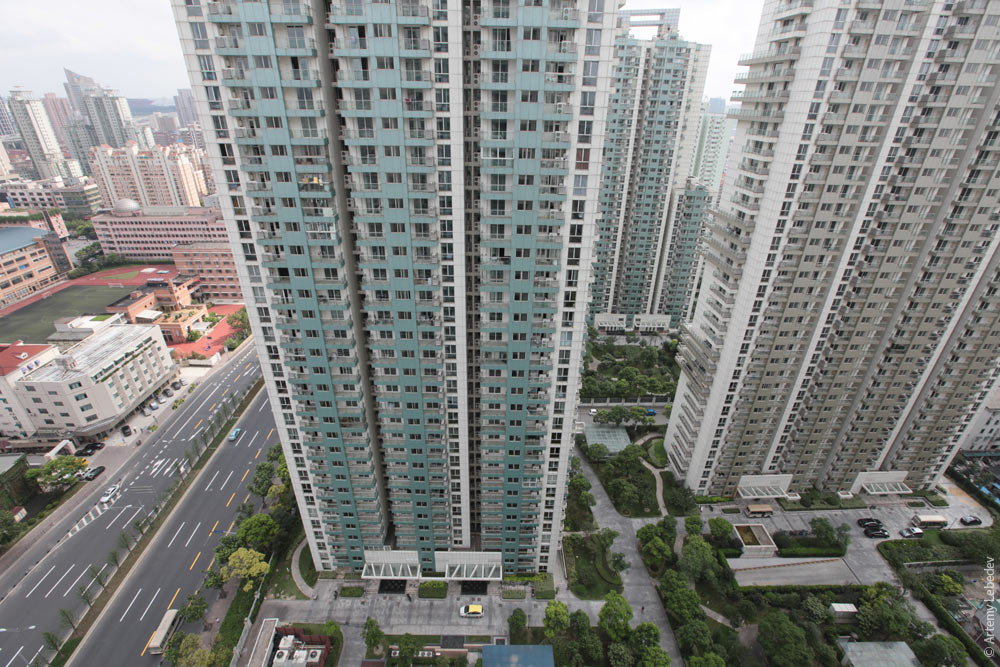
The Shanghai Apple Store is just a But I still love my country and haven’t traded it for greener foreign pastures. It’s where I was born, where I live, where I work, where I dream about one day seeing decent roads, decent houses, decent cities. That’s why I became a designer. And began thinking about urban design. And so the Ministry of Culture and Spiritual Development of the Republic of Sakha (Yakutia) invited me take part in a round table dedicated to the Olonkholand urban planning project. This was all taking place in the Russian pavilion at the World Expo in Shanghai. Even from afar, you can already see that the Russians don’t give a crap about anyone except their own and the Chinese. Most English speakers wouldn’t even be able to figure out that the pavilion belongs to Russia. Only refined connoisseurs will recognize the GoGoRiki character with the fallen-down sign out front as a universal identifier. 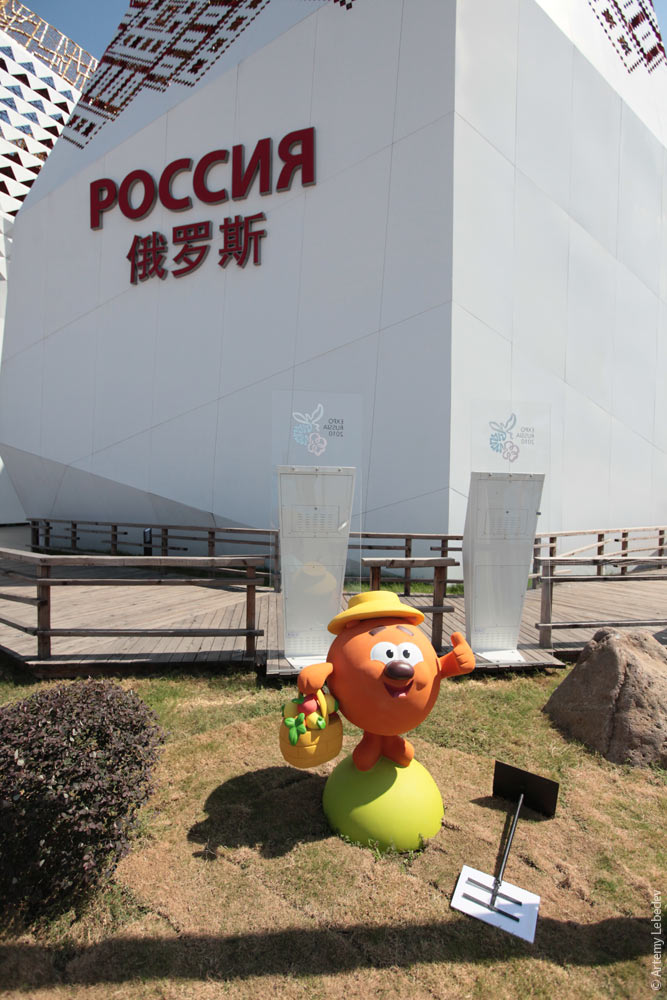 From the outside, our pavilion looks more than decent. But inside, it’s a total embarrassment. Let’s not even mention the fact that the towers have glass ceilings, but there’s no way to actually clean them, so all the crud from recent rainfalls hangs over unfortunate guests’ heads. 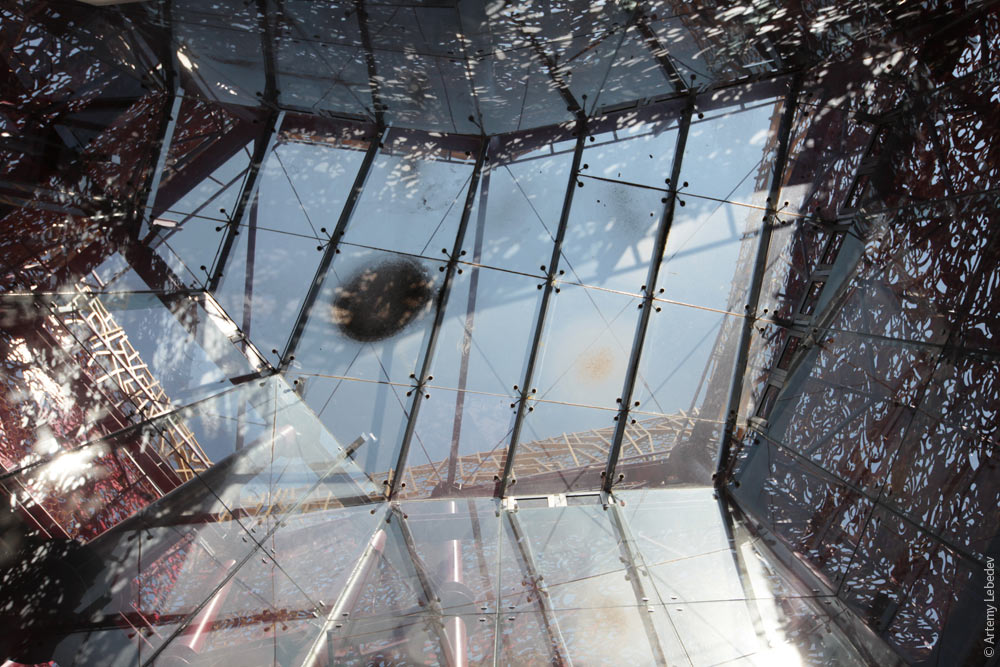 Inside, visitors are shown non-functioning (albeit plugged in) multimedia kiosks dedicated to our main innovative nanotech export product: victory in a war that took place 65 years ago. Who cares if we live in the past? The world will get over it, and besides, it’s not like we have anything else to offer. 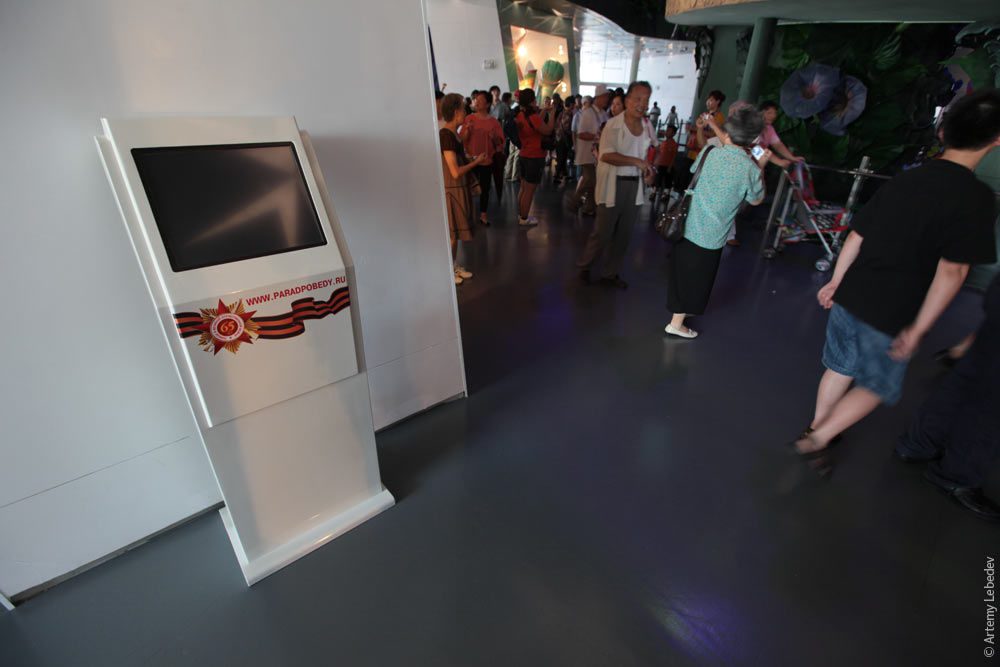 All right, so perhaps I’m exaggerating again. Of course we have things to offer. The entire giant pavilion has exactly one Russian invention on display: a color printer that prints on glass and other surfaces. You totally get the feeling like you’re at Graph Expo 2010. But that feeling quickly fades, because there’s just one printer and nothing else all around. Although fine, I’ll admit, that’s not entirely true. If you walk around the pavilion and look carefully, you’ll see a little corner that belongs to ROSATOM, the State Atomic Energy Corporation, as well as something that, to my untrained eye, looks like part of a 1911 automatic telephone exchange with step-by-step switches that was produced by the Ericsson company in St. Petersburg. But I could be wrong. It could be some piece of innovative nanotech. Maybe that’s why it’s roped off and has a “Do Not Touch” sign.  The gift shop sells T-shirts which, I will bet you anything, were made in China. It would be difficult to find a display sample this filthy and gross even in our stores back home. 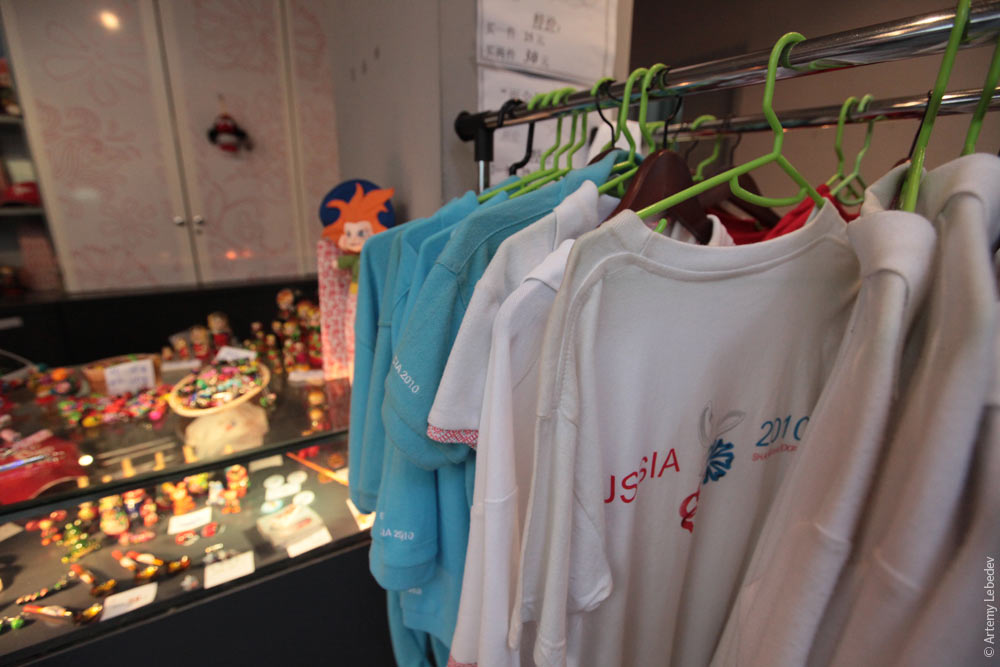 Our mascot, our everything, is a flame-haired retard. 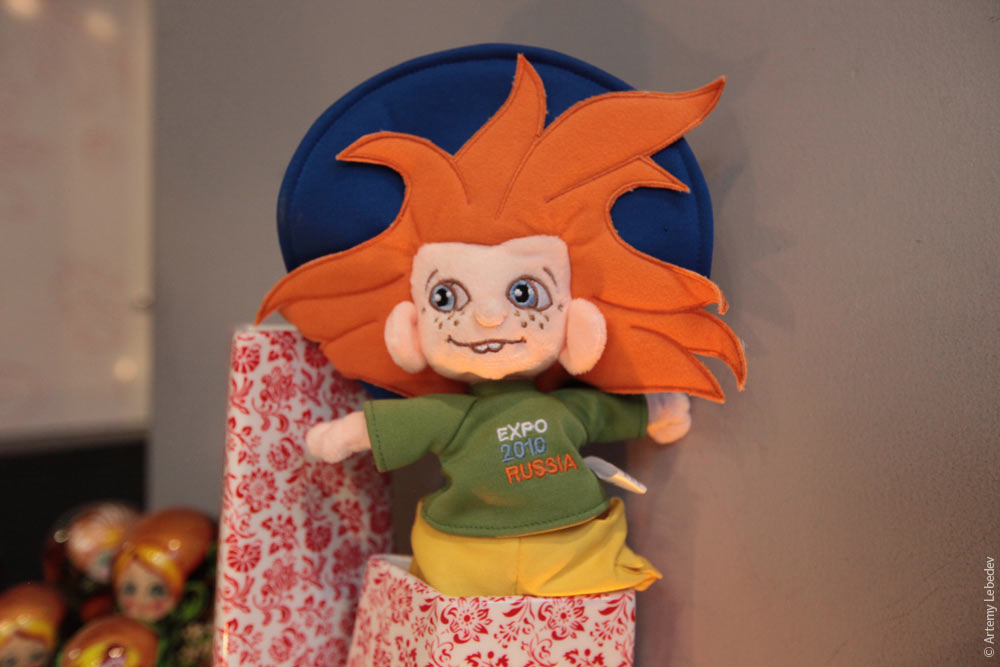 There’s a two-hour line to get into the pavilion. People are still blissfully ignorant of what awaits them inside. I got into the pavilion very easily every time—I simply came up to the back entrance and asked for political asylum. The Chinese security guard would unhook the barrier without a word and let in the man saying something in an incomprehensible language. Meanwhile, the real Chinese are suffering outside in the sweltering heat so that they can experience the Magical World of Dunno, based on a Russian children’s book. Every display in the magical world has a sign: “Do Not Sit,” “Do Not Touch,” “Do Not Sit,” “Do Not Touch,” “Do Not Sit,” “Do Not Touch.” Despite this, of course, everyone sits and touches, because that’s just how people are these days. They feel a compelling urge to get a photo of themselves hugging every single thing in sight. (The only other place where I encountered similar signs—"Do Not Touch" and "Not For Sale"—was the Nigerian pavilion.) The technology used to construct and paint the displays is on par with the latest developments in the field—for 1973. The same sad papier-mâché, painted by hand with a good old paintbrush. One is touching and the other is sitting. Can’t you read the signs, dammit? 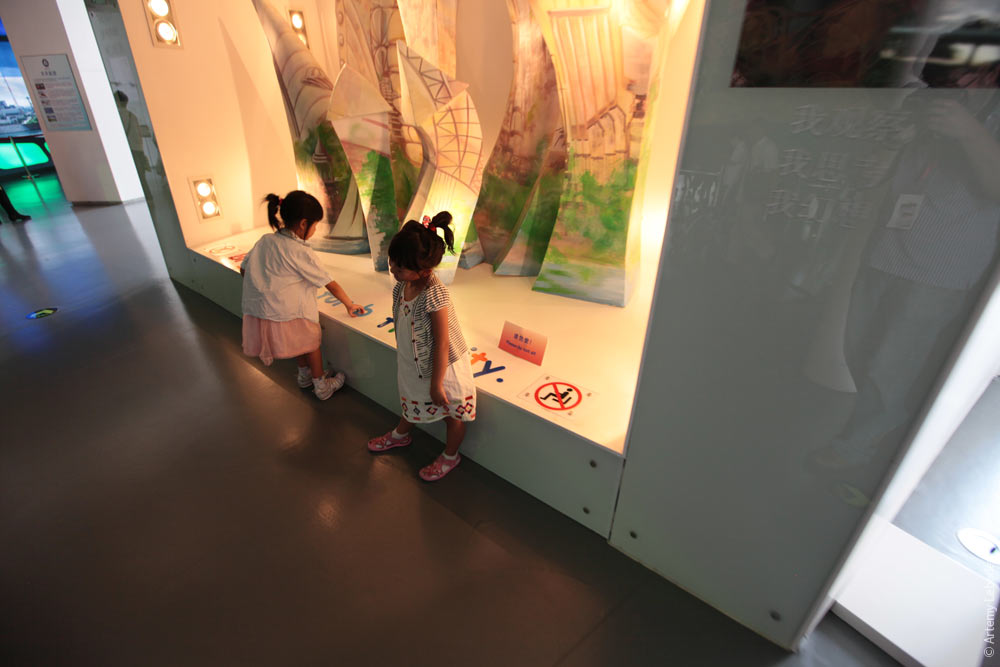 After carefully studying two square meters of circuit boards, the crowd heads to the second floor, where a spiral ramp takes them down through an acid flashback-worthy vista of hallucinogenic flowers, two-meter-tall cucumbers, psilocybin strawberries, trippy thingamajigs and oooh look at that shiny thing with all the colors, so preeeeettyyyy it’s like the universe on a stick, hee-hee.  Sorry about that. It sucked me in. Now, the reader may rightfully accuse us of not honoring the prophet in our own country. Let the reader rest assured—there are more dismal-looking pavilions than ours. For example, Croatia. Croatia’s pavilion is essentially a long hallway with video projections on the walls, the entrance to which is roped off with airport security barriers. The message being: take a look and get lost. They really beat us to the meaninglessness prize, no question about it. 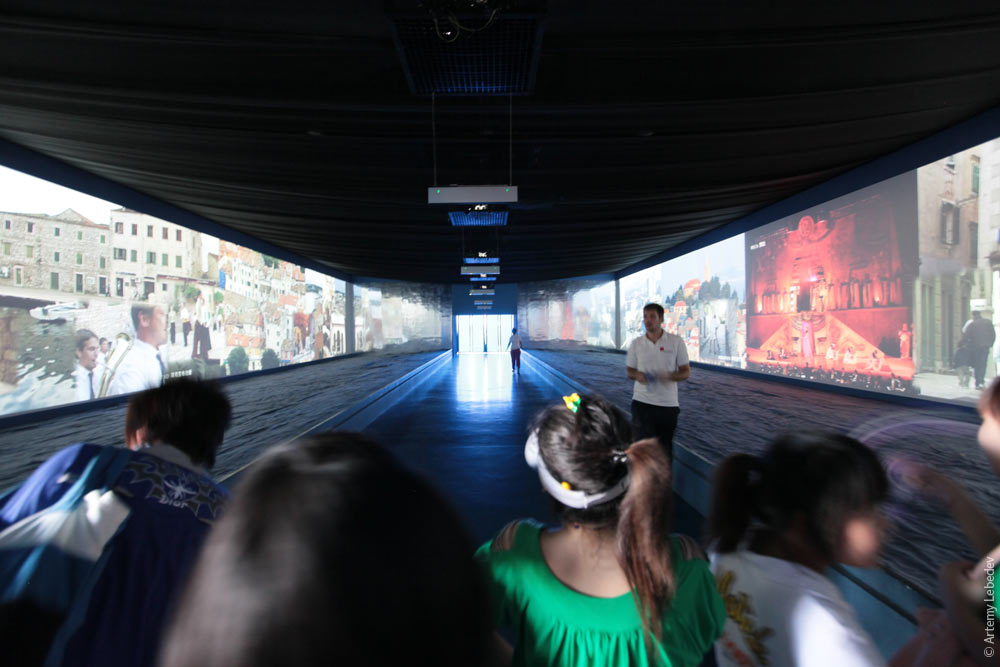 There’s also Angola, with an emergency exit through the rear end of a handball player. 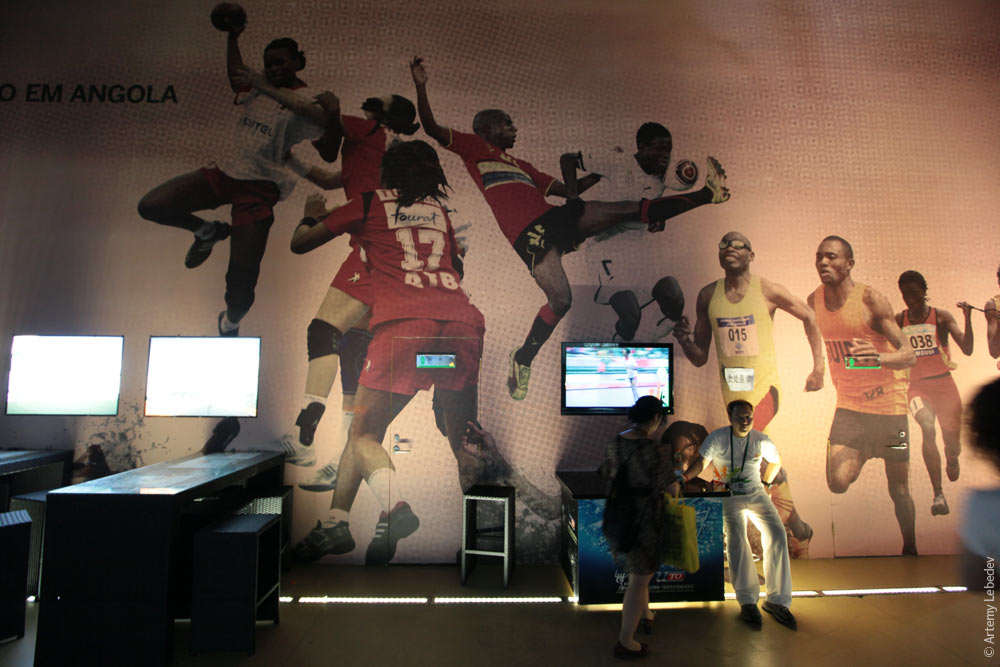 And Tunisia, with a homey Soviet electric kettle plugged into the wall. 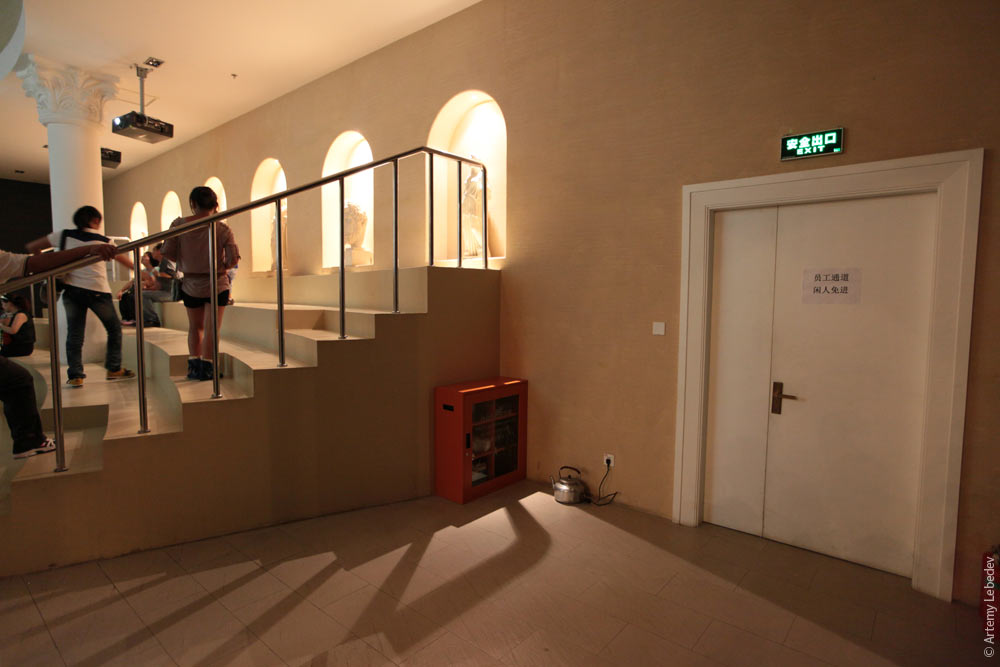 And then there are the Very Western People. For example, England. 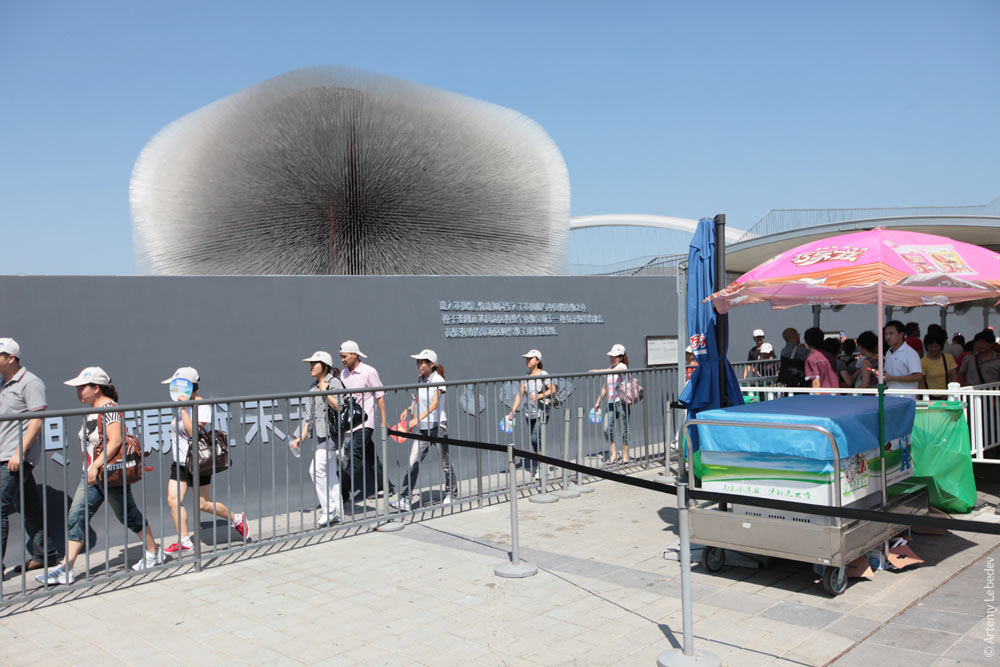 You walk in—and there’s a gazillion polycarbonate handles with different things sealed inside, sort of like the shift knobs that all the Georgian taxi drivers used to have in their Volgas. You go in, marvel, and move on. 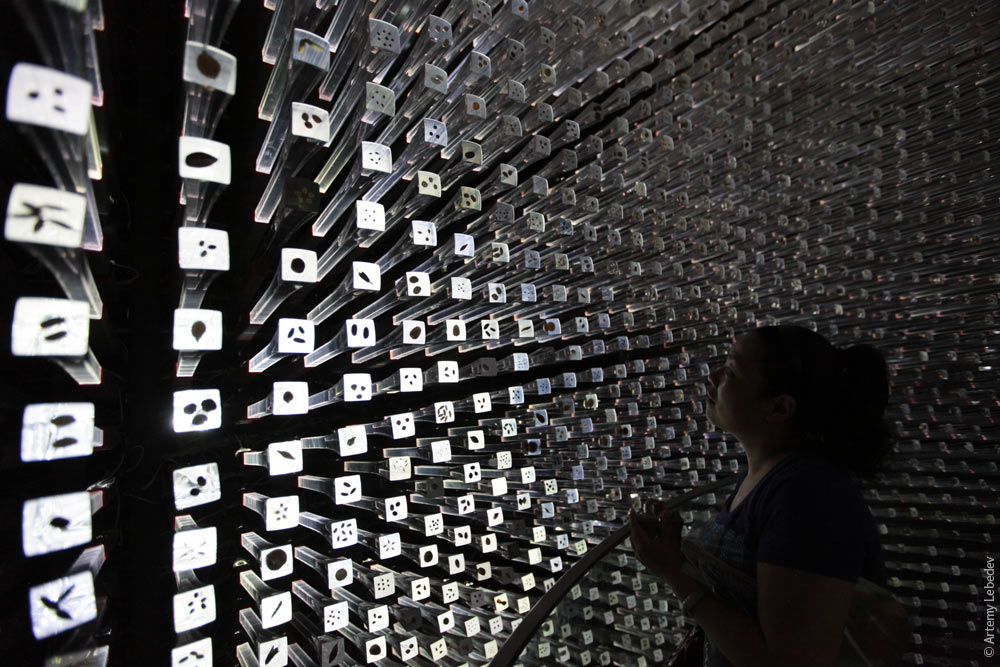 The German pavilion left the biggest impression of all. Everything in it is pretty straightforward: technology, manufacturing, conveyors-schmeyors. And then everyone goes into a spherical three-level auditorium with a multimedia ball suspended in the center. And two hosts present a show in which this ball plays a central role. And everyone experiences total catharsis and walks out enlightened and speechless, as if they’ve just witnessed Borges’ Aleph. And no one can utter a single word for another five minutes.  Meanwhile, it’s time for a lunch break at the Russian pavilion. Everyone heads to the Russian restaurant, which is located right there in the same place. Everyone sits down. And orders. And time passes. 10 minutes. And 20 minutes. And 30. And nothing. Everyone has to present again, so they all run off. The only ones who remain are myself and Paul Andreu, an old guy in his seventies whom the Yakuts also invited to the round table. A really cool old guy. He was the chief architect of the Charles de Gaulle Airport and 10 other ones. He told me about how he once commissioned a font for directional signage from Frutiger. For me, that was kind of like being a seminary student who gets to hear a personal anecdote first-hand from a living apostle. And then the waiter comes up and is all like, “Can I serve the appetizers now?” Anyway, we never did eat lunch. Oh, and the city has electric buses that charge up at bus stops. The stops are equipped with special contacts for this. When the bus stops, contacts extend from its roof and connect to the other contacts. 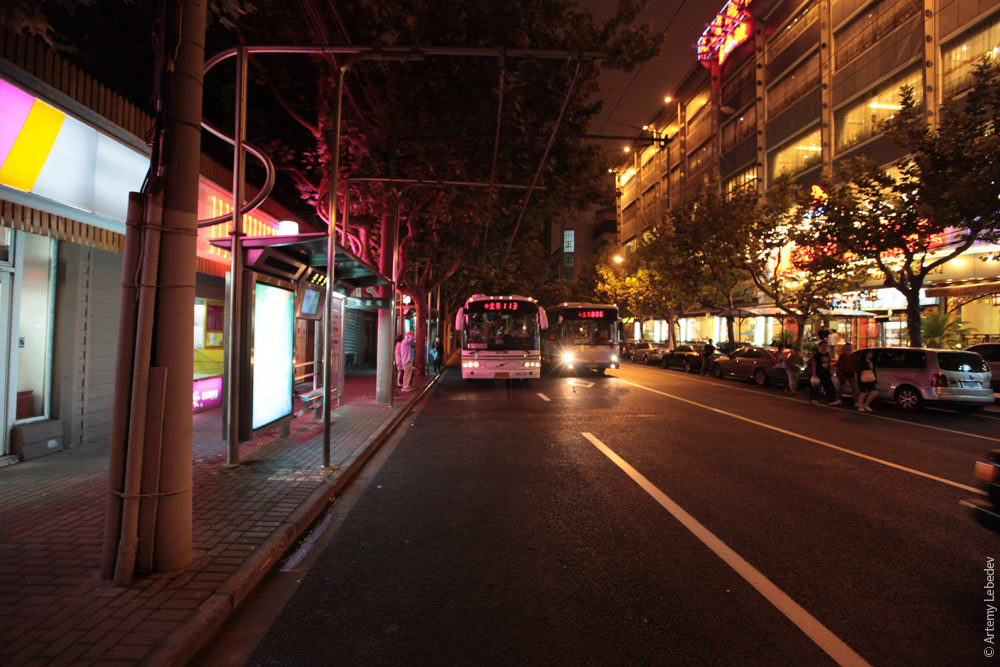 |